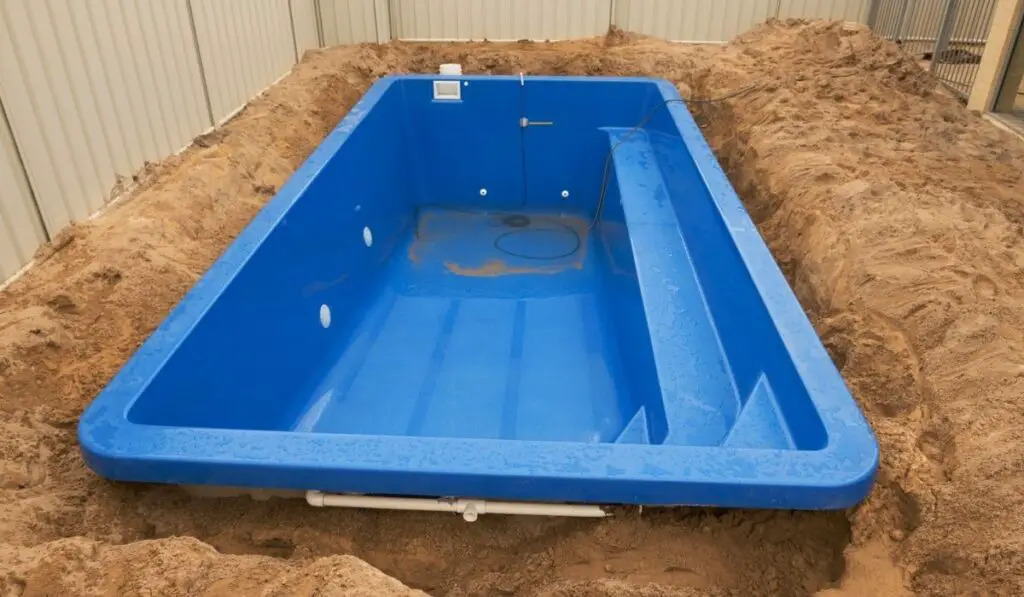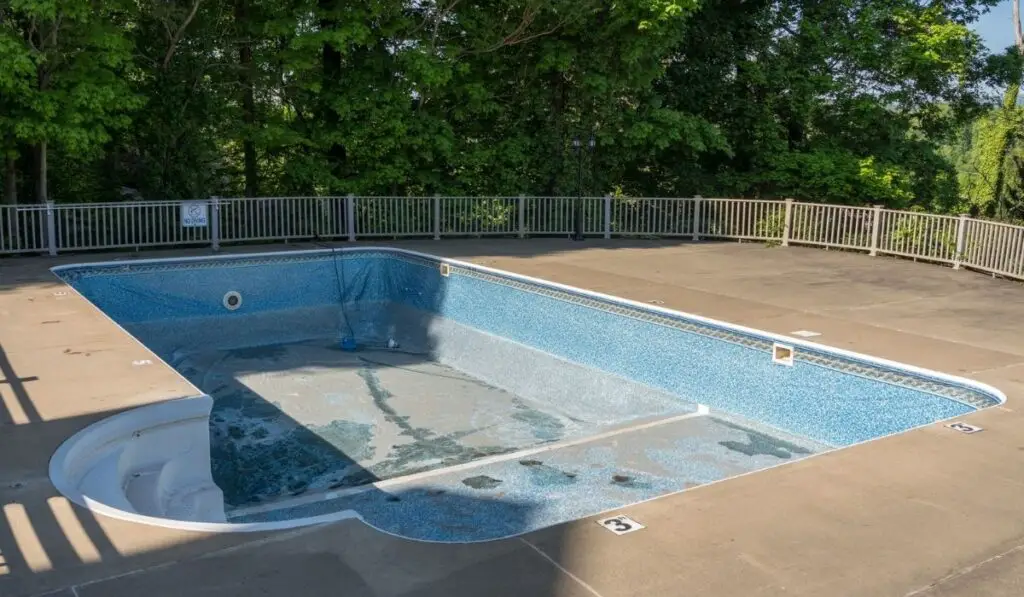Fewer things in life are more refreshing and relaxing than soaking in your backyard pool on a hot afternoon. Before you can turn this dream into a reality, there are several decisions that you will have to make. Key among them is the type of pool that’s best for you and your property.
For in-ground pools, the choice for most homeowners is between fiberglass and vinyl. Fiberglass pools are known to be durable, easy to install, and easy to maintain, but they’re also harder to customize. Vinyl liner pools are inexpensive to install but require more upkeep and won’t last as long.
Before you settle on either pool type, you should consider factors such as installation time, cost, durability, maintenance needs, style, and customization options. Understanding these factors should help you make an informed decision. Let’s take a closer look at the pros and cons of fiberglass and vinyl pools.
How Are Fiberglass Pools Installed?

Installing a fiberglass pool is relatively easy, and it takes a shorter time compared to other pool types. This is mainly because fiberglass swimming pools are pre-engineered in factories and delivered to your home ready for installation. The pool arrives in one piece and is simply lowered into place.
The steps for installing an in-ground fiberglass pool include:
- Site preparation
- Excavation
- Setting the foundation
- Pool placement
- Backfilling
- Plumbing
A proper fiberglass pool installation takes about three to five weeks. Finishes, which include coping and decking, as well as setting up the pool fence may extend the project by a few days.
The installation will likely set you back somewhere between $35,000 and $100,000, depending on design features and additional options you choose to include, as well as other factors such as installation time.
Fiberglass Pool Maintenance
Fiberglass pools are low maintenance. They have a smooth, non-porous surface that makes it easier to clean and control algae growth.
Resurfacing and acid washing are unnecessary, and cleaning requires 30% less chlorine. This makes the fiberglass pools very low maintenance.
The only major maintenance requirement is the gel coating replacement after 15 years.
How Long Do Fiberglass Pools Last?
Fiberglass pools are sturdy and exceptionally durable. They are also able to resist wear and tear caused by chemicals and natural elements such as sunlight.
Because of all these qualities, fiberglass pools have an average lifespan of between 25 and 30 years. A good quality pool, made by a reputable manufacturer, installed professionally, and maintained properly can last for up to 50 years.
Pros And Cons Of Fiberglass Pools
If you’re considering installing a fiberglass pool on your property, there are several pros and cons that you should consider. These include the following:
Pros of Fiberglass Pools
- Fast installation time: Fiberglass pools have the shortest installation time among all in-ground pools.
- Low maintenance: The smooth gel coating resists algae growth. This reduces cleaning time and labor costs.
- Durability: A factory-controlled quality of construction gives them technically superior shells and durable finishes.
- Smooth surface: This provides a comfortable shallow-end experience especially for kids with no risk of scraping and scratching.
- Use of fewer chemicals: The surface of the pool does not impact pH levels of the water, and this reduces the need for regular pool treatment to regulate water chemistry.
Cons of Fiberglass Pools
- Limited customization options: Since the pools are prefabricated in factories from molds with established shapes and sizes, there is less room for creativity and exploration in certain aspects of the pool.
- Warping: Fiberglass pools are susceptible to warping, bending, and bulging during backfilling especially with gravel.
- Spider cracks: Poor manufacturing and tension during shipping or installation can cause cracks in the topcoat, which may develop into structural cracks over time.
- Site access: The site of installation must be accessible to heavy machinery including the crane and transport truck. Your property must have enough space to accommodate these machines.
How Are Vinyl Pools Installed

Vinyl pool installation basically involves installing a vinyl liner sheet over a pool wall structure and using galvanized steel or thermoplastic panels to erect it. The floor rests on a cement or sand bottom. The installation process involves the following steps:
- Excavation
- Installation of the pool wall panels
- Plumbing and pouring concrete footing
- Setting up the main drains, pump, and filter
- Troweling the base material mix and laying down the pool bottom
- Installation of the coping before backfilling the pool
- Vinyl liner installation
- Filling the pool
- Deck installation
The installation of a vinyl pool is very quick; it can take just a week or two. Setting up the patio may add more time to the entire project.
The project will cost you between $22,000 and $50,000. This figure may vary depending on several factors including pool size and shape, soil condition, accessories, and others.
Vinyl Pool Maintenance
Vinyl pools are the most affordable, but they’re also delicate. They require special care and maintenance to avoid regular repairs and replacement. Here are maintenance tips that will improve the longevity of your vinyl pool:
- Ensure proper water chemical balance to prevent bacteria and algae growth
- Avoid draining your pool as it causes the liner to shrink and lose shape
- Cover your pool when it’s not in use to protect it from the weather as well as dirt and grime buildup
- Vacuum regularly with an appropriate pool vacuum
- Keep sharp objects away from your pool as these could puncture and tear your liner
- Keep a patch kit like this one (on Amazon) on hand to handle any small vinyl tears or leaks quickly
How Long Do Vinyl Pools Last?
On average an in-ground vinyl pool liner will last for 5 to 9 years while an above-ground pool liner will last for 6 to 10 years. Factors that affect the liner’s longevity include proper installation, water chemistry, care, and maintenance and to a large extent, luck.
Pros and Cons of Vinyl Pools
Before you settle on a vinyl pool, here are some pros and cons that you should consider:
Pros of Vinyl Pools
- Fast installation time: Vinyl pools are available as ready-to-assemble kits. This makes transportation to the site, assembly, and installation easy and fast.
- Economical: They are the least expensive pool types on the market. Installation also very easy and hence inexpensive.
- Smooth surface: provides a comfortable swimming experience especially for children.
Cons of vinyl pools
- Maintenance costs: Vinyl harbors algae and bacteria and must be cleaned regularly. It also becomes slippery when the water chemistry is not maintained.
- Not so durable: Vinyl liners typically last 8 to 12 years before they need replacement. They stain and tear easily if not properly maintained.
- Higher lifetime costs: High chemical usage, replacement liners, and maintenance costs drive up the long-term cost of owning a vinyl pool.
- Low resale value: You will be forced to replace the liner before selling your home especially if the liner has been used for a long time.
The Verdict
Fiberglass and vinyl pools are both excellent mid-range options for homes, apartments, and condominium associations. Your choice of which to install should ultimately be influenced by your needs, property, and budget.
Consider the pros and cons of each and get input from friends and family so that you can make an informed decision on whether to install a fiberglass or vinyl pool.
